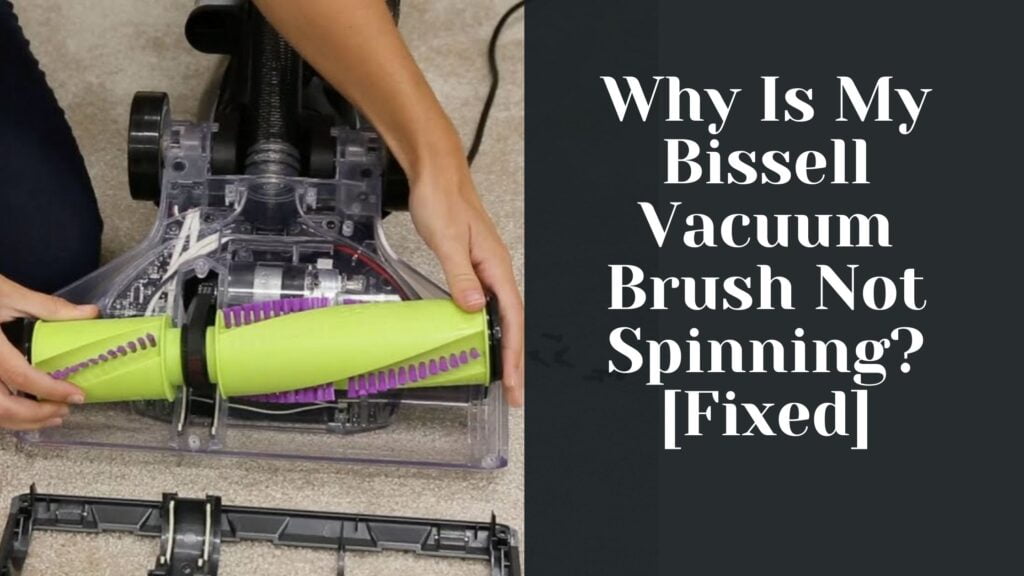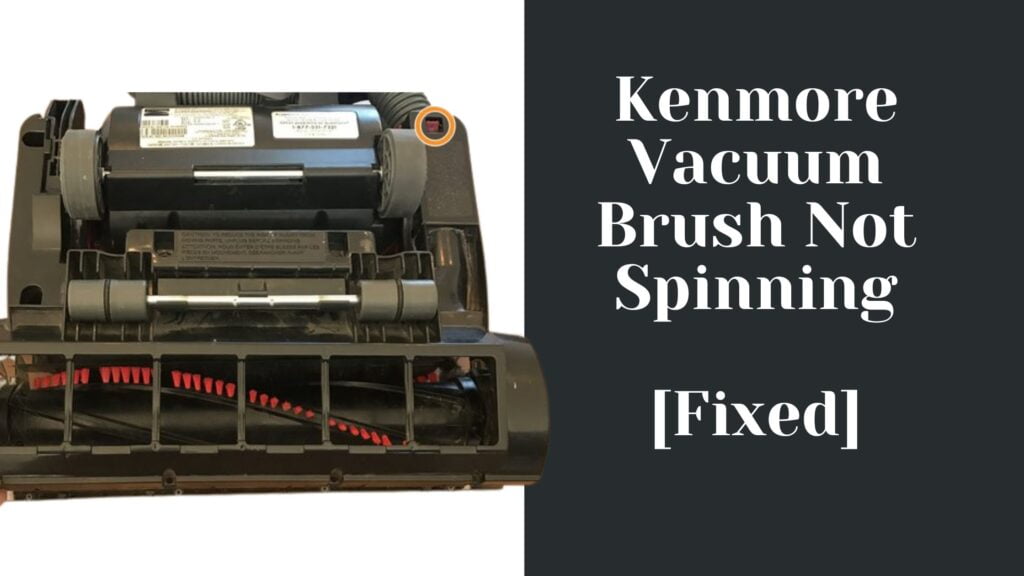Dyson vacuums are known for their power and excellent suction.
However, like any other appliance, they can sometimes encounter issues, such as loss of suction.
When encountering suction problems, it’s crucial to determine if the problem is caused by a blockage or a mechanical malfunction.
Checking for blockages in the canister, hose, or extension wand is the first step you should take. Another area worth checking is the brush bar, which can also inhibit suction when not turning properly.
Furthermore, your vacuum filters might require cleaning or replacement. A clogged filter can lead to reduced suction power, so ensuring that they are in good condition is essential for optimal performance.
We will go through each of these potential issues in detail, providing you with the necessary knowledge to troubleshoot your Dyson vacuum not sucking and get it back to its full cleaning capability 🙂
Identifying Suction Problems
When your Dyson vacuum is not sucking, there could be a few reasons behind the issue.
This section will help you identify and address possible suction problems, such as loss of suction and clogged hose or attachments.
Loss of Suction
Losing suction is a common problem for many Dyson vacuum cleaners.
The first step in addressing this issue is to check for any blockages in your vacuum.
Remove the suction hose from the inlet and test the suction at this point.
If the inlet suction is strong, the blockage likely lies within the suction hose, extension wand, or floor cleaning head.
It could also be as simple as the dust bin being too full.
Dyson vacuums use root cyclone technology to separate dirt and debris from the air, which collects in the bin.
If the bin becomes full, it can lead to a loss of suction.
Empty the bin to ensure optimal airflow and suction power.
Clogged Hose or Attachments
A clogged hose or attachment can also cause your Dyson vacuum to lose suction.
To identify and address this issue, follow these steps:
- Check the Hose: Inspect the suction hose for any obstructions and remove them if necessary. Also, verify that the seals at the hose connections have not become loose, as air leakage can lead to a reduction in suction power.
- Examine the Attachments: Take a look at the vacuum’s attachments, such as the nozzle and cleaner head, and ensure they are free from debris and blockages. Make sure that the brush bar is clear of any entangled hairs or fibers that could inhibit its movement and function.
- Inspect the Side Valve: Some Dyson vacuum models have a side-valve feature to prevent clogging. Check the valve and make sure it is not obstructed by dirt or debris, causing compromised suction.
Inspecting and Cleaning Filters
Regular Filter Maintenance
Proper filter maintenance is crucial for maintaining your Dyson vacuum cleaner’s suction power.
A clogged or dirty filter can result in less efficient performance and possible overheating.
To keep your vacuum working at its best, routinely inspect the filters for any signs of dirt, debris, or damage.
- Empty the dust container regularly to prevent dust and dirt from building up.
- Check the filters after each cleaning cycle to ensure they are free from debris.
Cleaning the Washable Filter
Your Dyson vacuum cleaner features washable filters that should be cleaned regularly to ensure optimal performance.
Follow these steps to clean your washable filter:
- Turn off your Dyson vacuum cleaner and disconnect it from the wall socket.
- Remove the washable filter from the vacuum. Refer to your owner’s manual if you are unsure about locating your specific filter.
- Wash the filter in cold water only, without using any detergent or placing it in a dishwasher or washing machine.
- Soak the filter in a bowl of cold water for at least five minutes.
- Squeeze the filter gently to remove excess water, then allow it to air dry for at least 24 hours before reinstalling it in the vacuum.
Remember to clean the washable filter every month, or more frequently if your vacuum is used heavily or in a dusty environment.
Replacing the HEPA Filter
Some Dyson vacuum cleaners are equipped with HEPA filters, which help trap tiny particles and allergens.
These filters are not washable, and should be replaced periodically to ensure optimal suction performance.
To replace the HEPA filter:
- Purchase a new, genuine Dyson HEPA filter that is compatible with your specific vacuum model.
- Turn off your Dyson vacuum cleaner and disconnect it from the wall socket.
- Remove the old HEPA filter from the vacuum. Again, refer to your owner’s manual if you are unsure about locating the filter.
- Install the new HEPA filter according to the manufacturer’s instructions.
It is generally recommended to replace the HEPA filter every six months to one year, depending on usage and the presence of allergens in your home.
Regularly inspecting and cleaning your Dyson vacuum cleaner’s filters will help maintain its suction power, ensuring a clean and healthy environment for you and your family.
Examining and Clearing Blockages
Inspecting the Cleaner Head
First, check your Dyson vacuum’s cleaner head for blockages.
Disconnect the cleaner head from the main body of your vacuum.
Pay close attention to the small crevice between where the brush bar sits and the neck of the cleaner head.
Look for any build-up of dust or debris and remove them using a metal cloth hanger or a similar tool designed for clearing blockages.
Checking the Brush Bar and Beater Bar
Another common cause of blockage in your Dyson vacuum is the brush bar and the beater bar, which are located underneath the cleaner head.
To inspect these components, first, unplug your vacuum cleaner from the power source.
Turn the cleaner head over to expose the brush bar and the beater bar. Look for any tangled hair, fibers, or other debris preventing the bars from rotating effectively.
You can remove these blockages manually or use a wire cloth hanger or similar tool to help with the process.
- Brush Bar Blockages: Look for any tangled hair, fibers, or debris in the bristles of the brush bar. Remove them manually or with a suitable tool.
- Beater Bar Blockages: Examine the beater bar for any entangled materials or objects stuck in its grooves or openings. Clean the beater bar thoroughly with a brush or a cloth to remove any debris.
Also, make sure both the brush bar and the beater bar rotate freely after removing any obstructions.
Clearing the U-Bend Pipe
A blockage in the U-bend pipe can significantly impact your Dyson vacuum’s suction power.
To check for and clear blockages in the U-bend pipe:
- Locate the U-bend pipe at the base of your vacuum cleaner, usually on the backside.
- Release the U-bend pipe by pressing the release button.
- Check the inside of the pipe thoroughly for any debris or blockages.
- If necessary, use a long wire or a suitable tool to clear any obstructions found in the pipe.
- Once the pipe is cleared, reattach the U-bend pipe securely to the vacuum cleaner.
Assessing Other Potential Issues
Motor and Battery Problems
Over time, wear and tear can affect the motor, causing it to lose efficiency or stop working altogether.
If you have checked for blockages and cleaned filters, but your Dyson vacuum still isn’t sucking properly, it might be time to consider motor replacement.
Contact Dyson or an authorized service center for assistance.
If your vacuum cleaner is cordless, the battery may also be an issue.
Batteries lose their capacity over time, which can lead to a decrease in suction power.
Make sure your battery is charged and holding power correctly.
If it’s not, consider replacing the battery.
Air Leakage and Seals
Air leakage can significantly impact your Dyson vacuum’s suction power.
Examine your vacuum for any cracks in the plastic or damage to the seals, which could cause air to escape and decrease suction.
Pay particular attention to the hose connection points and the seals around the clear bin. If you find any issues, you may need to replace the damaged parts.
Maintaining and Servicing Your Dyson Vacuum
Regular Cleaning and Maintenance
To keep your Dyson vacuum cleaner functioning efficiently, it’s essential to perform regular cleaning and maintenance.
- Start by checking the roller frequently
- Empty the canister regularly
- Make sure to clean the filters according to the manufacturer’s guidelines
- Inspect the hoses and attachments for blockages
Seeking Professional Service
If you’ve tried the above steps and your Dyson vacuum is still not performing at its best, it’s time to seek professional assistance.
Dyson offers excellent customer service and has a team of experts ready to help troubleshoot and resolve any issues affecting your Dyson vacuum cleaner.
To schedule service or repairs, contact your local Dyson customer service center or authorized service providers, who are specialized in handling Dyson products in the domestic cleaning market.
Remember to provide your vacuum cleaner’s model and serial number when requesting service, as this information will help the professionals quickly identify and address the issue.
Conclusion
Addressing the issue of your Dyson vacuum not sucking is often a straightforward process.
Start by emptying the bin as a full bin could lead to a loss of suction power. Regularly emptying the bin ensures optimal cleaning performance from your vacuum.
Next, examine the hoses and the U-bend pipe to ensure they are clear of any obstructions. Debris caught in these areas can greatly impact the suction power of the vacuum. Maintaining a clean hose and U-bend pipe is essential for maintaining suction.
If your vacuum is still not sucking after these steps, you may need to inspect the roller. First, disconnect the vacuum from the power source, turn the vacuum upside down, and remove the protective plate around the roller. Check for anything stuck in the roller, such as hair or other debris. Use scissors or a brush to carefully remove any buildup to restore your vacuum’s functionality.
Moreover, inspect the filters and brush bar. Cleaning or replacing the filters regularly helps your vacuum maintain optimum performance. Also, ensure that the brush bar is not faulty and it’s turning properly when the vacuum is on.
Lastly, if none of these solutions resolve your issue, don’t hesitate to contact Dyson for further assistance.
















